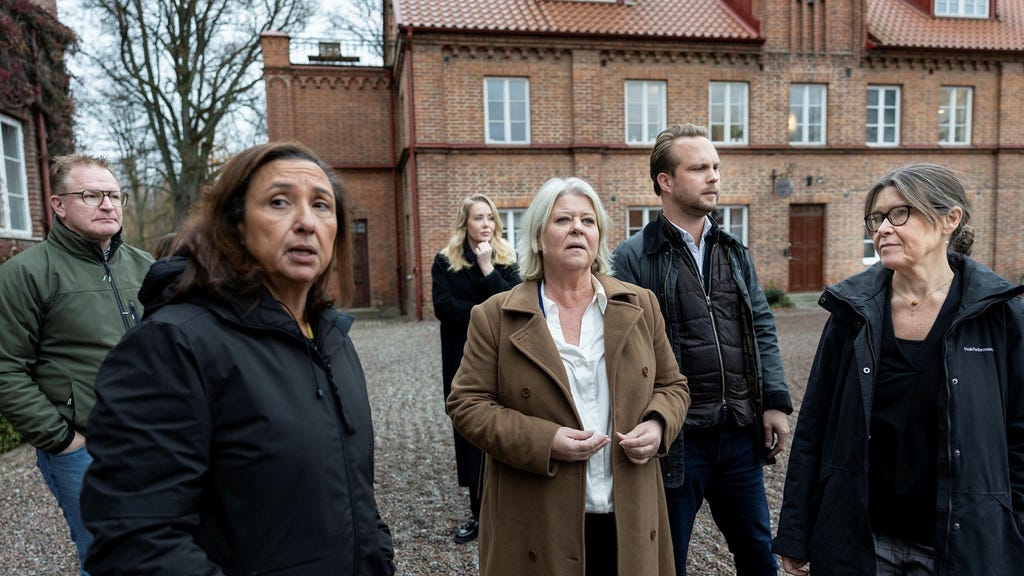The Swedish national youth care system, Statens institutionsstyrelse (Sis), is facing a dramatic overhaul in response to an unprecedented influx of young offenders, particularly those involved in serious gang-related crimes. This surge, observed predominantly over the past two years, has placed immense strain on facilities like Sis Råby, located near Lund, which houses youth convicted of grave offenses. The escalating youth crime wave has startled authorities, who were unprepared for the scale and nature of the problem. Social Services Minister Camilla Waltersson Grönvall (M) has acknowledged the unforeseen nature of this development, highlighting the surprising emergence of gang-involved children as young as 10 to 15 years old. This unexpected demographic shift is driving the urgent need for systemic reform within the youth care system.
The escalating youth criminality reflects a complex interplay of societal factors, including the rise of gang culture, increased access to weapons, and breakdowns in family and community support structures. These factors contribute to a volatile environment where young individuals, often lacking positive role models and opportunities, become susceptible to the allure of gang life. Sis institutions, originally designed to rehabilitate and reintegrate young offenders, are now struggling to cope with the sheer volume of admissions and the increasingly complex needs of the youth in their care. The current system appears ill-equipped to effectively address the root causes of this surge in youth crime, necessitating a comprehensive review and re-evaluation of its core principles and operational strategies.
The influx of younger and often more violent offenders presents a significant challenge to Sis staff. These young individuals often arrive with a history of trauma, substance abuse, and limited educational attainment, requiring specialized interventions and resources. The existing framework of Sis, designed for a different profile of young offender, struggles to adequately address these complex needs. Moreover, the increased presence of gang-affiliated youth within Sis facilities creates a heightened risk of internal conflicts and power struggles, posing significant safety concerns for both staff and other residents. This environment further complicates the rehabilitation process and necessitates a re-evaluation of security protocols and therapeutic approaches within the institutions.
The government’s proposed reforms aim to address these pressing issues by focusing on early intervention, preventative measures, and more specialized care tailored to the specific needs of young offenders. This entails strengthening collaboration between social services, schools, and law enforcement agencies to identify and support at-risk youth before they become entrenched in criminal activity. Additionally, the reforms will likely involve enhancing the educational and vocational training programs within Sis facilities to equip young people with the skills and opportunities necessary for successful reintegration into society. This emphasis on providing individualized support and building pathways to a positive future is crucial for breaking the cycle of youth crime and fostering long-term societal well-being.
Beyond the immediate crisis management, the re-evaluation of the Sis system calls for a deeper examination of societal factors contributing to the rise in youth crime. This includes addressing issues of socioeconomic inequality, strengthening family support systems, and promoting positive youth development initiatives within communities. A holistic approach that tackles the root causes of youth crime is essential for achieving lasting change. Furthermore, the reforms must consider the specific needs of girls within the youth justice system, recognizing the gender-specific factors that influence their involvement in criminal activity and ensuring that interventions are tailored to address their unique experiences.
The ongoing transformation of the Swedish youth care system represents a critical juncture in addressing the complex challenges of youth crime. The success of these reforms hinges on a multi-faceted approach that encompasses preventative measures, individualized support, enhanced security within institutions, and a commitment to addressing the underlying societal factors contributing to this escalating problem. Moreover, the effectiveness of the reforms will depend on sustained investment in resources, staff training, and ongoing evaluation to ensure that the system evolves to meet the ever-changing needs of the young people it serves. Ultimately, the goal is to create a system that not only protects society but also provides genuine opportunities for rehabilitation and a brighter future for the young individuals entrusted to its care.














